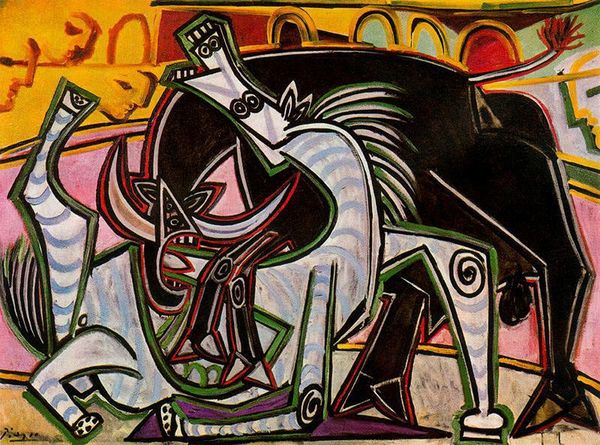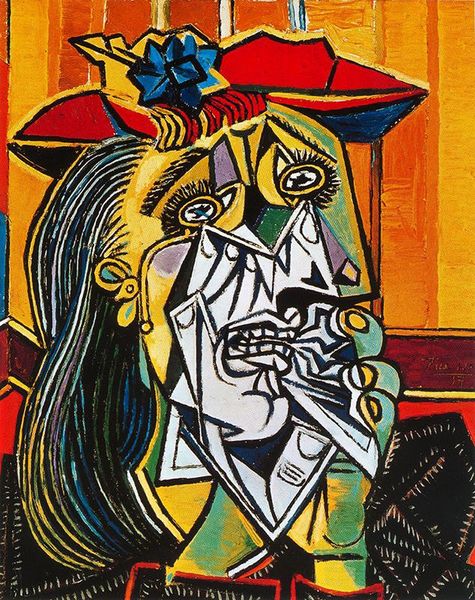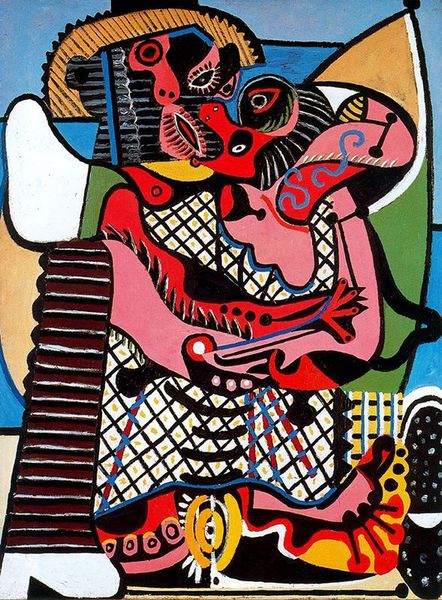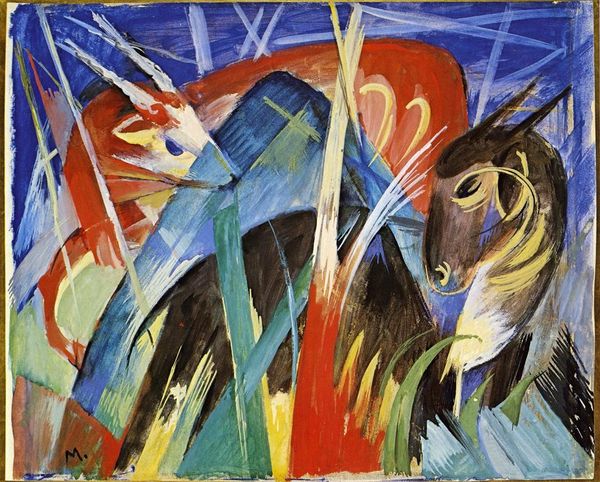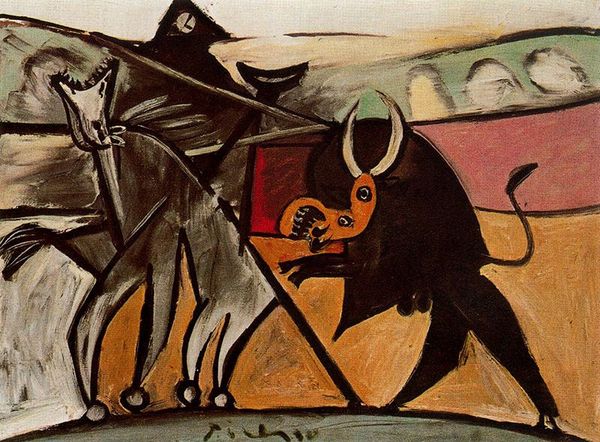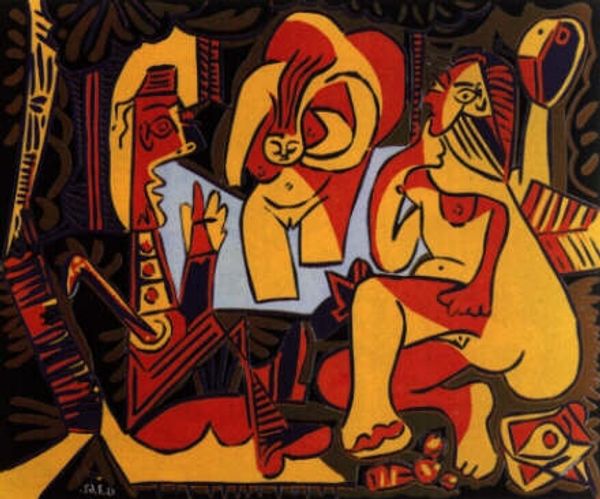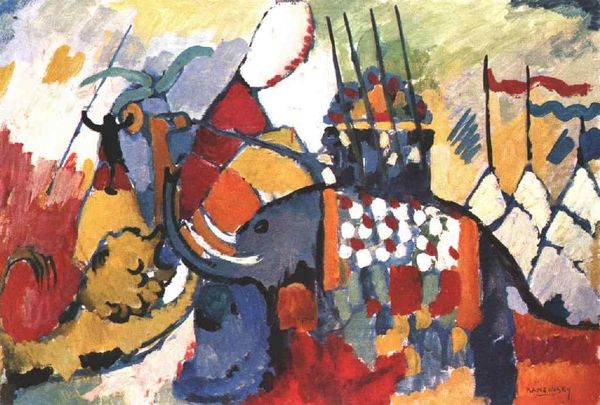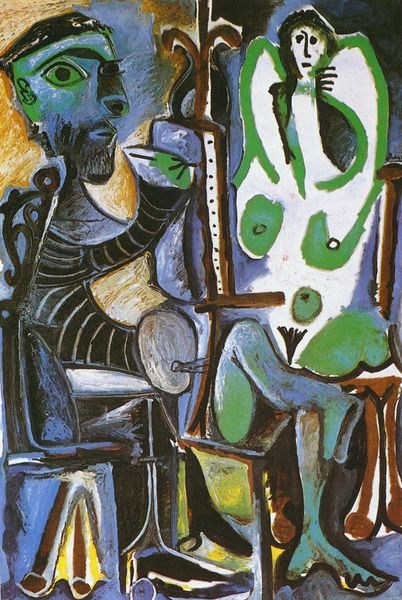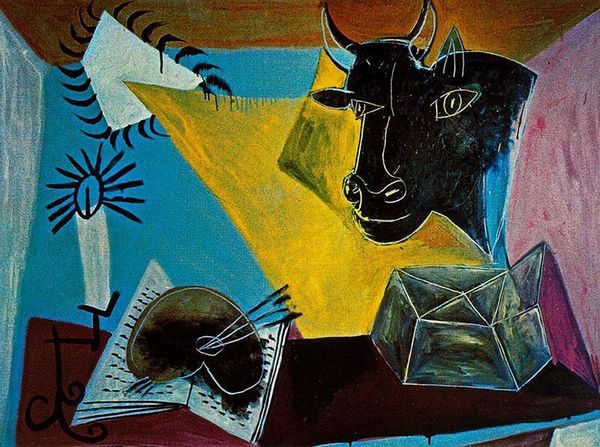
painting, oil-paint
#
cubism
#
narrative-art
#
painting
#
oil-paint
#
pop art
#
figuration
#
naive art
#
abstraction
#
surrealism
#
modernism
Copyright: Pablo Picasso,Fair Use
Curator: Here we have Picasso’s “Bullfight,” created in 1934 using oil on canvas. My first impression involves contemplating how Picasso, particularly in his Cubist periods, used a traditional subject like the bullfight to explore fragmentation and reassembly, both formally and politically, as war brewed. Artist: You know, it just hit me right in the gut! All twisted up, like a nightmare circus. It feels raw, primal, violent… but somehow still playful? Those polka dots feel so strange amid the chaos. It’s the sort of unsettling beauty only Picasso can pull off, isn’t it? Curator: Exactly! The playful polka dots contrast with the seriousness of death, maybe hinting at the commercialization of this traditional spectacle. The oil paint, thick in some areas and thin in others, really emphasizes the act of making. Did he intend for us to see the traces of his labor so clearly, the evidence of each brushstroke in the scene of ritualized violence? Artist: Absolutely. And I love how he’s not afraid to throw in some clashing colors and textures. That vibrant red backdrop? Electric. The blue ground underneath? It’s almost…blood diluted in water. Gives me shivers. The skewed perspective adds to the disorienting feeling, a funhouse mirror reflecting our fears and fascinations. Curator: It certainly makes one think about consumption. The materials are almost aggressively present, reminding us that the spectacle of the bullfight – or art for that matter – requires significant economic infrastructure, from canvas production to the cost of raising the bulls themselves. Picasso’s reputation too, plays a crucial role; he's become a commodity, an essential brand name. Artist: It’s like a fever dream. This artwork lingers in the mind long after you've left it. Curator: Indeed, considering the time it was produced, it is both formally intriguing and a stark material document of its age, inviting considerations beyond its visual aspects alone.
Comments
No comments
Be the first to comment and join the conversation on the ultimate creative platform.
